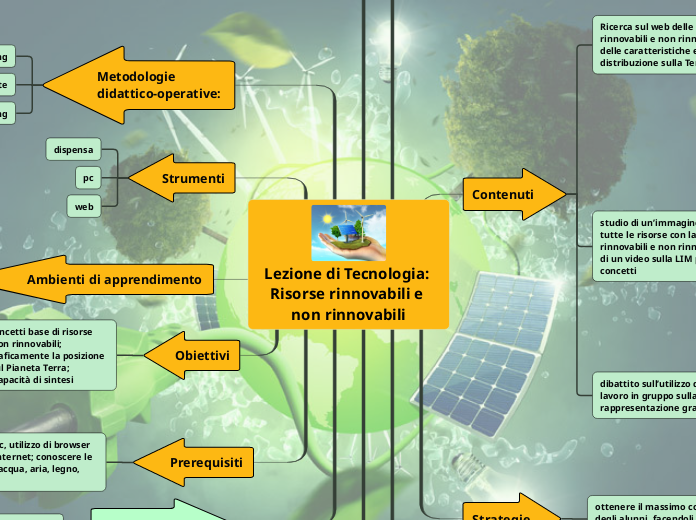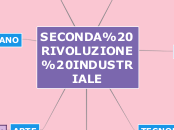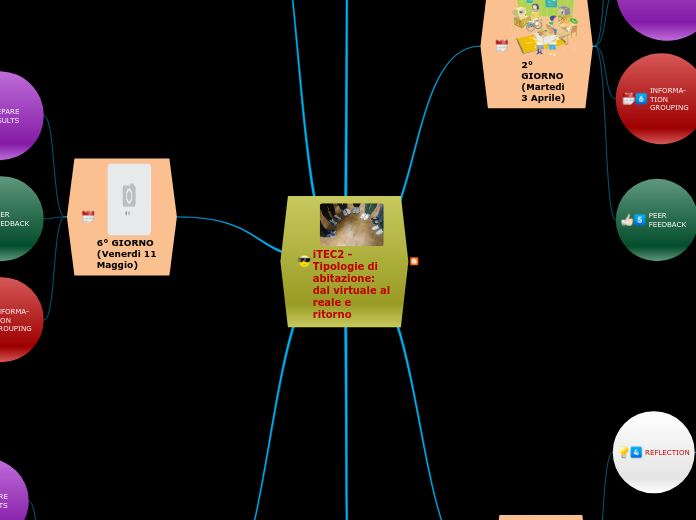FASI OPERATIVE
PROGETTAZIONE DIDATTICA
FASE 5
Verifica finale: verifica orale sui concetti appresi e test con kahoot e wordwall
Wordwall
kahoot
Lezione di Tecnologia: Risorse rinnovabili e non rinnovabili
Type in the name of the book you have read.
Additional info
Prerequisiti
conoscenza del pc, utilizzo di browser per navigare in internet; conoscere le risorse naturali (acqua, aria, legno, ecc.)
Obiettivi
Type the main events of the book, classifying them in: events from the beginning, events from the middle, and events from the end of the book.
Describe the story visually. Add a representative picture for each of them.
Introdurre i concetti base di risorse rinnovabili e non rinnovabili; visualizzare graficamente la posizione delle risorse sul Pianeta Terra; sviluppare la capacità di sintesi
Ambienti di apprendimento
In contrast to the main idea, the theme is the message, lesson or moral of the book.
Some tips to find out the theme of the book easier:
- Try to find it while you are reading. It may be stated or implied.
- Think about how the characters reacted to obstacles.
- Think about the important decisions that the characters made.
- Think about the characters growing or changing throughout the book.
Laboratorio di informatica
Classe
Strumenti
web
pc
dispensa
Take notes while you read the book. Write here your favorite quotes from the book.
Metodologie didattico-operative:
Take notes while you read the book. Type here the resources, books, or websites that the author mentioned and you want to check out later.
Cooperative learning
Debate
Brainstorming
Valutazione
Valutazione dell’alunno: autovalutazione su quanto appreso dalla lezione mediante la somministrazione di una scheda di autovalutazione;
Valutazione del docente: riflessione sull’efficacia delle metodologie adottate, sull‘acquisizione delle competenze da parte dell’alunno.
Verifica
Verifica orale sui contenuti
Strategie
ottenere il massimo coinvolgimento degli alunni, facendoli sentire protagonisti dell’apprendimento.
The main idea is what the book is mostly about.
Some tips to find out the main idea of a book easier:
- Read the title.
- Look for the text features.
- Figure out if you are reading a fiction or a non fiction book.
- Think about some examples that support this idea.
Contenuti
Type the names of the book characters. Start with the main character.
Draw arrows to represent the relationship between them and if it is possible write on them what they represent for each other (if they are relatives, friends, lovers, enemies etc.)
dibattito sull’utilizzo di tali risorse, e lavoro in gruppo sulla rappresentazione grafica delle stesse
FASE 4
Suddivisione in due grandi gruppi, che si occuperanno rispettivamente delle risorse rinnovabili e non rinnovabili, mettendo insieme ciò che hanno trovato individualmente.
studio di un’immagine che racchiude tutte le risorse con la distinzione tra rinnovabili e non rinnovabili; e visione di un video sulla LIM per fissare i concetti
FASE 3
Osservazione immagine e discussione
RISORSE RINNOVABILI e NON RINNOVABILI (Differenze ed esempi)
Ricerca sul web delle principali risorse rinnovabili e non rinnovabili, studio delle caratteristiche e la loro distribuzione sulla Terra;
FASE 2
Debate in classe sulle risorse individuate da ciascun alunno, sulla classificazione e sulla loro distribuzione sul pianeta Terra
FASE 1
What are the characteristics that best describe the character? Type them here.
Insieme ai tuoi compagni individua tutte le risorse rinnovabili e non rinnovabili presenti sul pianeta Terra. Poi cerca sul web le principali risorse e crea un power point con l'elenco delle risorse trovate e le relative immagini
Tempi
What is the reason why the author wrote the book?
15 minuti cooperative learning
15 minuti debate in classe
30 minuti in laboratorio informatico
Finalità
Who is the author of the book? Type in his/her name.
saper lavorare in gruppo, saper rispettare le regole per quanto riguarda gli interventi









